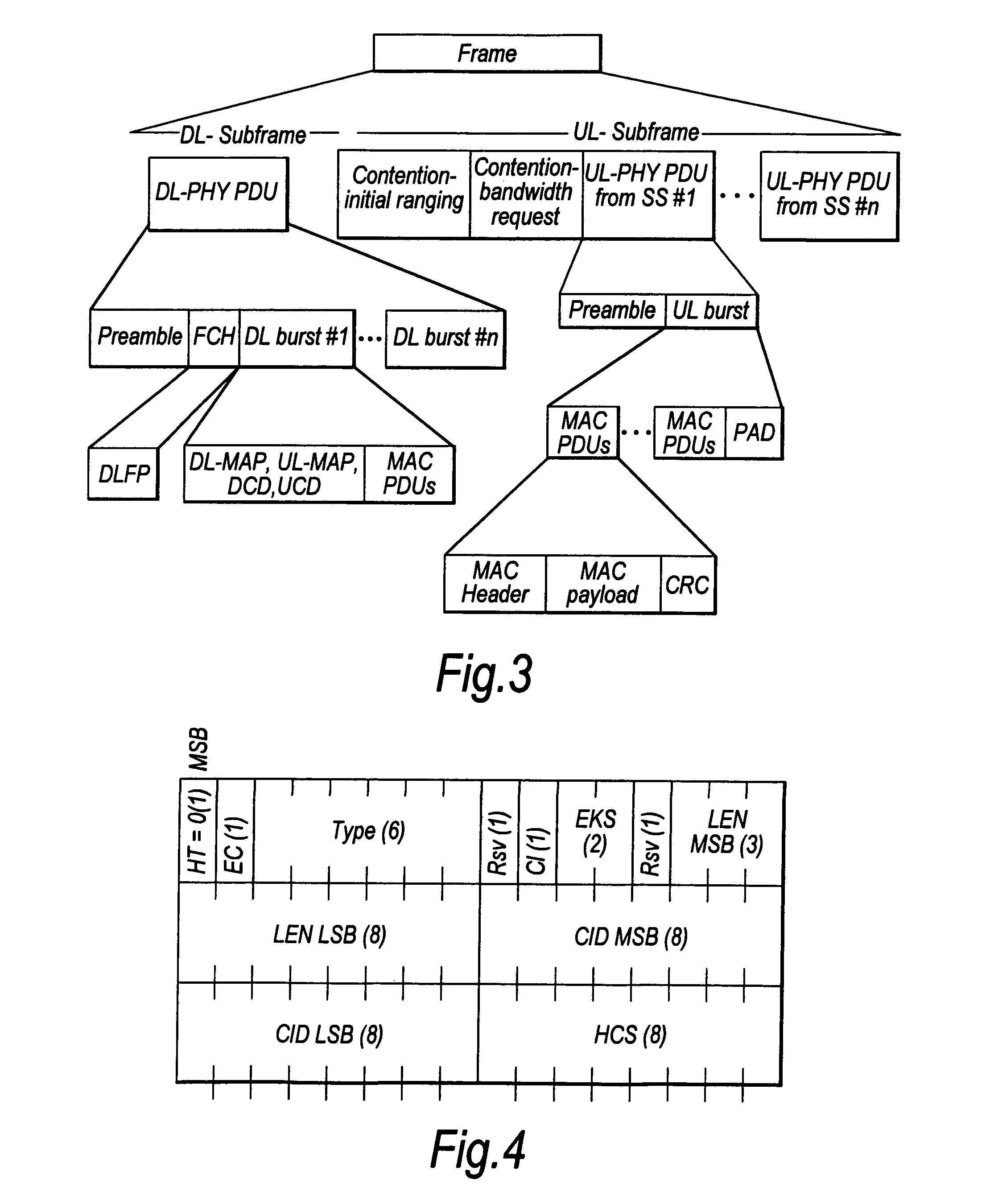Wireless communication systems
a wireless communication system and wireless communication technology, applied in the field of wireless communication systems, can solve the problems of increasing network latency, incongruity of bandwidth requests, and rs may lack the knowledge it requires for its own scheduler algorithm, so as to reduce bandwidth allocation in multi-hop relay wireless communication systems and reduce bandwidth requests
- Summary
- Abstract
- Description
- Claims
- Application Information
AI Technical Summary
Benefits of technology
Problems solved by technology
Method used
Image
Examples
Embodiment Construction
[0057]An embodiment of the present invention will now be described with reference to FIGS. 7-13, using an IEEE 802.16 network as an example.
[0058]Consider again the MR system schematically illustrated in FIG. 7. To obtain UGS service within such a system, MS does not need to send a bandwidth request to get UL bandwidth allocation. MR-BS must allocate UL bandwidth to UGS connection automatically (unsolicitedly). On the other hand, the BS must allocate bandwidth based on the QoS information within DS-REQ / RSP messages during the connection setup phase, namely based on an “Unsolicited grant interval” TLV. If there is no timing synchronization between MR-BS and RS, UGS latency could be degraded in MR systems.
[0059]As shown in FIG. 9, if RS doesn't know the appropriate timing at which to grant bandwidth to a UGS service in an SS, it will wait for the BS to allocate bandwidth first, thus degrading the latency performance. If RS can know the time to allocate bandwidth to a UGS service in an...
PUM
 Login to View More
Login to View More Abstract
Description
Claims
Application Information
 Login to View More
Login to View More - R&D
- Intellectual Property
- Life Sciences
- Materials
- Tech Scout
- Unparalleled Data Quality
- Higher Quality Content
- 60% Fewer Hallucinations
Browse by: Latest US Patents, China's latest patents, Technical Efficacy Thesaurus, Application Domain, Technology Topic, Popular Technical Reports.
© 2025 PatSnap. All rights reserved.Legal|Privacy policy|Modern Slavery Act Transparency Statement|Sitemap|About US| Contact US: help@patsnap.com



